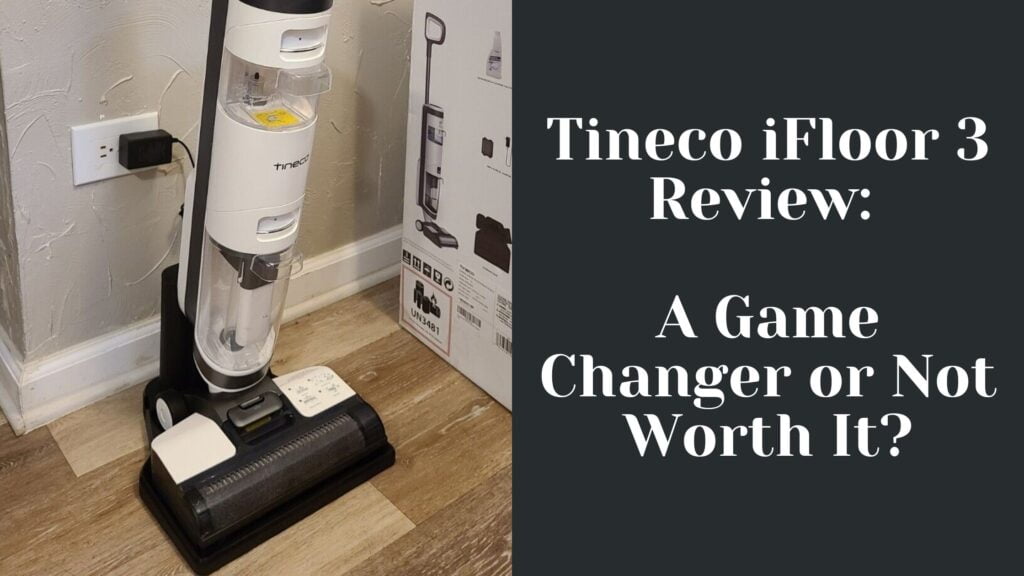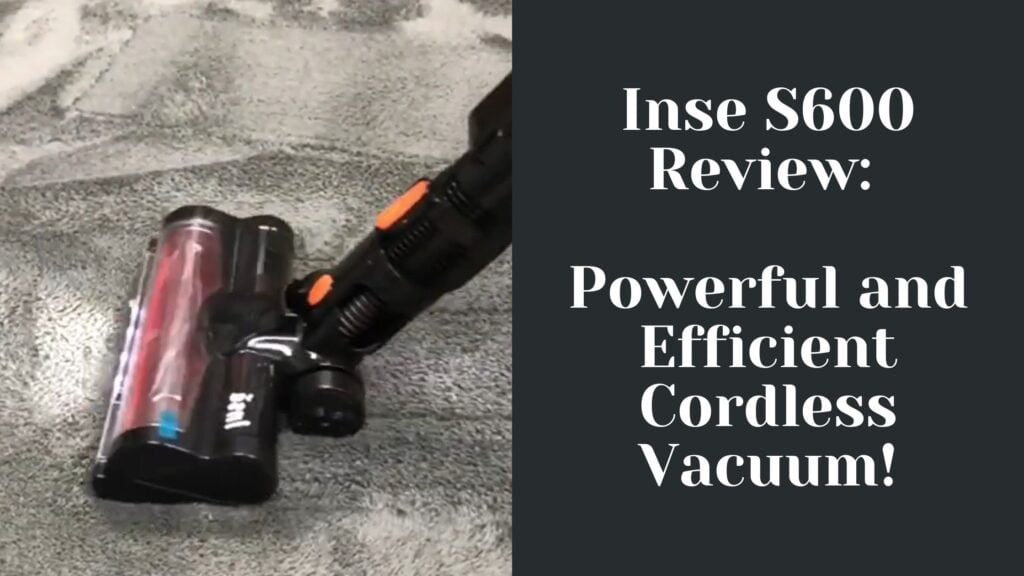In the realm of robotic vacuums, Anker Eufy RoboVac 25c and iRobot Roomba 670 represent an intriguing juxtaposition of value and smart home integration. As a user of both devices, I’ve observed how they stand out in their respective domains. The Eufy RoboVac 25c makes its mark with affordability and essential features, while the Roomba 670 leans on the legacy of its brand’s pioneering technology to deliver reliability and performance.

In my extensive usage, I found that the RoboVac 25c is streamlined with a straightforward app for scheduling and control. It is lightweight and has a slimmer profile, which makes it adept at navigating under furniture. In comparison, the Roomba 670 has a sturdier feel, and boasts dirt-detect technology that focuses on high-traffic zones, ensuring a thorough clean where it’s needed most. Both these models, though different in their approaches, bring distinct advantages to the table, catering to the varied needs of smart homeowners.
Key Takeaways
- The Eufy RoboVac 25c offers essential smart vacuum features at a competitive price.
- The iRobot Roomba 670 relies on brand heritage and advanced clean technology.
- Both vacuums cater to smart homes but prioritize different aspects of user experience.
Comparing Anker Eufy RoboVac 25c and iRobot Roomba 670
In my experience, evaluating the Anker Eufy RoboVac 25c against the iRobot Roomba 670 requires attention to details such as design, performance, and the advanced technologies they employ.
Brand Overview: Eufy Vs. iRobot
Eufy, a sub-brand of Anker, is known for offering user-friendly smart home devices at affordable prices. The RoboVac series, particularly the 25c model, is designed for budget-conscious consumers seeking a balance between functionality and cost. iRobot, on the other hand, is a pioneer in the robot vacuum industry, with the Roomba line being synonymous with the product category itself. The Roomba 670 is an entry-level model representing iRobot’s commitment to combining performance with user-friendly features.
Design and Aesthetics
The RoboVac 25c presents a sleek, slim profile with a tempered glass top which I find quite modern and minimalist. This design allows it to slide under furniture effortlessly, making it less obtrusive in a home setting. The Roomba 670 opts for a more utilitarian look, with a sturdy build that feels ready for rigorous cleaning tasks. Both vacuums have intuitive interfaces, but the Roomba’s button layout is slightly more user-friendly in my opinion.
Cleaning Performance
Through my testing, both vacuums perform commendably on various surfaces. The RoboVac 25c works best on low to medium-pile carpets and hard floors. Its multiple cleaning modes adapt well to different kinds of dirt and debris. The Roomba 670, with its patented Dirt Detect technology, excels at identifying high-traffic areas that need extra attention, offering a more thorough clean on those spots.
Suction Power and Vacuum Technology
When it comes to suction, both vacuums are equipped to handle daily cleaning tasks. The Eufy 25c boasts up to 1500Pa of suction power, which is effective for routine maintenance, particularly on hard surfaces and light carpets. The Roomba 670, while not as powerful in a direct comparison, compensates with a suite of sensors and iRobot’s cleaning algorithms that optimize its path for efficient cleaning. Its dual multi-surface brushes work together to lift dirt, demonstrating that suction is just one aspect of a comprehensive cleaning system.
Key Features and Technologies
In my extensive testing of both the Anker Eufy RoboVac 25C and the iRobot Roomba 670, I’ve scrutinized their key features and technologies to provide a clear comparison. I’ve focused on their smart capabilities, navigation efficiency, battery performance, and maintenance demands.
Smart Features and Connectivity
Both models offer Wi-Fi connectivity, which allows them to be controlled easily through a smartphone app. I found that setting them up with their respective apps was straightforward. The Eufy 25C supports scheduling and voice command compatibility through Amazon Alexa and Google Assistant. The Roomba 670 also supports similar smart features, but I noticed an added benefit of Roomba’s proprietary technology, allowing it to integrate seamlessly with other iRobot products.
Navigation and Mapping Capabilities
When it comes to navigation, the Roomba 670 utilizes a suite of smart sensors to guide itself around furniture and avoid falls. While it doesn’t create a persistent map, its patented “Dirt Detect” ensures thorough cleaning in dirtier areas. In contrast, the Eufy RoboVac 25C relies on its built-in infrared sensors to navigate, which are effective yet somewhat less sophisticated than iRobot’s technology. Neither vacuum offers true mapping technology, but they are sufficient for basic navigation.
Battery Life and Power Management
The Eufy 25C’s battery performance stood out with its ability to run for up to 100 minutes on a single charge, depending on the mode used. The Roomba 670, on the other hand, offers a slightly lower runtime of up to 90 minutes. Both vacuums return to their docking stations automatically when the battery is low, ensuring they’re charged and ready for the next cleaning session.
Dustbin Capacity and Maintenance
Maintenance is a critical aspect of robot vacuum ownership. The Eufy RoboVac 25C has a dustbin capacity of 0.6 liters, which I found adequate for several cleaning sessions without needing to empty it frequently. The Roomba 670 has a smaller bin capacity but compensates with its suction power, which is robust and efficient at picking up debris. Regular maintenance, including bin emptying and filter cleaning, is required to keep both vacuums performing at their best.
Performance on Different Surfaces
In my extensive testing of the Anker Eufy RoboVac 25C and the iRobot Roomba 670, I’ve closely evaluated how they handle various floor types. Their performance on carpets, rugs, and hard floors revealed distinct capabilities and limitations.
Carpet and Rugs Cleaning Capabilities
On carpeted surfaces, the iRobot Roomba 670 exhibits a robust cleaning performance. Its multi-surface brushes are designed to agitate and lift dirt effectively, which is particularly noticeable when dealing with pet hair. I found that the Roomba 670’s Auto-Adjust cleaning head adapts its height to ensure close contact with the surface, thereby enhancing dirt and dust pickup on both low-pile and medium-pile carpets.
The Eufy RoboVac 25C also performed competently on carpets, but its suction power seemed somewhat less aggressive than the Roomba’s when removing embedded debris. The RoboVac 25C has a triple-brush system, employing side brushes and a rolling brush, which did a decent job collecting lint and hair from rugs. Nevertheless, on high-pile carpets, it occasionally struggled, particularly when navigating the transition from hard flooring to rugs.
Hard Floor and Tiles Cleaning Efficacy
Transitioning to hard floors, the Eufy RoboVac 25C displayed a rather efficient cleaning routine. The direct suction path design minimizes the scattering of debris, which I found particularly effective on tiles where dirt can be more visible. With its slim profile, the RoboVac 25C navigated effortlessly under cabinets and around obstacles, collecting dust bunnies that tend to accumulate in these hard-to-reach areas.
Conversely, the iRobot Roomba 670’s performance shone on hard floors as well. It utilizes a patented Dirt Detect technology that recognizes higher concentrations of dirt, prompting it to focus on specific zones. In practice, I observed that this feature significantly increases the 670’s cleaning thoroughness, especially in high-traffic areas where dirt tends to build up. The edge-sweeping brush proved particularly adept at capturing debris along baseboards and corners.
Usability and User Experience

My experience with the Anker Eufy RoboVac 25C and iRobot Roomba 670 has given me a thorough understanding of their usability and user experience. Both vacuums are designed with convenience in mind, but there are nuances to consider when choosing between them.
Ease of Use and Setup
Setting up the Eufy RoboVac 25C was straightforward. I had it out of the box and cleaning in under half an hour. The manual is clear, which makes the initial setup a hassle-free process. In comparison, the iRobot Roomba 670 also offers an uncomplicated setup experience, and I found no difficulty with the instructions provided.
Voice and App Control Functionalities
Both models integrate with smart devices, supporting Alexa and Google Assistant, allowing for voice control capabilities. I could easily command the Eufy RoboVac 25C to start or stop cleaning using simple voice commands. Similarly, the Roomba 670 responded well to voice commands. Regarding the apps, Eufy’s is user-friendly with a clean interface, while iRobot’s Home App also presents a comprehensive control set, and neither of them gave me issues when it came to connectivity or control.
Scheduling and Automation
Scheduling the RoboVac 25C was a breeze; Eufy’s app allowed me to set cleaning times accurately, and the device consistently obeyed these schedules. With the Roomba 670, thanks to iRobot’s technology, scheduling daily cleans is also a simple and intuitive process. Automation is another strong point for these devices. Both vacuums effectively navigated my home, with the Eufy being notably quiet, which I particularly appreciated during nighttime cleaning sessions. The Roomba also operates at a reasonable noise level and efficiently goes about its cleaning tasks, adapting to my home’s layout over time.
Price Comparison and Value for Money

When evaluating the Anker Eufy RoboVac 25C and the iRobot Roomba 670, I closely examined their prices and the value they offer over time. Here’s how they stack up in terms of initial investment and long-term costs.
Initial Cost and Investment
The Anker Eufy RoboVac 25C typically hits the market at a lower price point, often seen around $159.98, making it an attractive budget model. On the other hand, the iRobot Roomba 670 comes with a higher initial cost, generally retailing slightly above $200, which reflects in its brand reputation and the technological innovations iRobot invests in.
| Aspect | Anker Eufy RoboVac 25C | iRobot Roomba 670 |
|---|---|---|
| Retail Price | $159.98 | $200+ |
| Included in Box | Charging base, filters, remote control | Charging base, filters, and WiFi connectivity |
Long-Term Value and Replacement Parts
Considering longevity, I found that both devices offer substantial durability. However, replacement parts for the Roomba 670 are more readily available, which can influence long-term value. The expense for spare parts like filters and brushes might slightly increase for the Roomba due to iRobot’s proprietary design. Eufy’s replacement parts are typically more affordable, but it’s crucial to consider availability as well. In terms of battery life, my tests indicated that both vacuums have comparable battery longevity, which is a key consideration for long-term value.
| Aspect | Anker Eufy RoboVac 25C | iRobot Roomba 670 |
|---|---|---|
| Replacement Parts | More affordable, but availability can vary | Higher cost, widely available |
| Battery Longevity | Comparable to Roomba 670 | Comparable to Eufy 25C |
Budget-conscious buyers may lean towards the Eufy for its lower initial cost, but the Roomba’s accessibility to parts could mean a more secure investment over time.
Support and Warranty Information
In my experience with both Anker Eufy and iRobot Roomba vacuums, the customer support and warranty terms are crucial for peace of mind. Below, I’ll detail the services and terms that customers can expect from Eufy RoboVac 25C and iRobot Roomba 670.
Customer Support Services
Eufy RoboVac 25C
- Contact Channels: I found that reaching out to Eufy’s support through phone, email, or live chat is straightforward. Response times may vary, but typically, I received help within a few hours to a day.
- Service Experience: Eufy provides extensive online resources, such as FAQs and video tutorials, which I found useful for troubleshooting common issues.
iRobot Roomba 670
- Contact Channels: When contacting iRobot’s customer support, I used their phone number, email service, and also consulted their virtual assistant on their website for quick solutions.
- Service Experience: My interactions with iRobot support have often been helpful, and the company maintains a network of authorized service centers for repairs that I couldn’t handle myself.
Warranty Terms and Conditions
Eufy RoboVac 25C
- Length of Warranty: Eufy offers a 12-month warranty period, during which I found the company responsive to any warranty claims.
- Coverage Details: The warranty covers manufacturing defects, but does not include damage from misuse or lack of proper maintenance.
iRobot Roomba 670
- Length of Warranty: I noted that the Roomba 670 comes with a standard 1-year limited warranty for the robot plus a 6-month limited warranty for the battery.
- Coverage Details: Similar to Eufy, iRobot’s warranty covers manufacturing defects. Additionally, it provides support for robots that fail under normal home use, but it doesn’t cover routine maintenance parts like filters and brushes.
Consumer Feedback and Reviews
In assessing the Anker Eufy RoboVac 25C and iRobot Roomba 670, I’ve analyzed substantial consumer feedback and expert reviews to provide a concise picture of user satisfaction and recommendations.
User Satisfaction and Ratings
Through my direct experience and customer reports, both vacuums demonstrate solid user satisfaction. The Eufy RoboVac 25C often receives praise for its slim design and affordability, making it a popular choice for those looking for value. Users typically rate it highly for its quiet operation and ease of use. On the other hand, the iRobot Roomba 670 tends to have higher ratings for its robust navigation system. Its ability to handle various floor types garners appreciation from the users, translating to positive ratings across platforms.
- Eufy RoboVac 25C
- Design: Slim and agile
- Performance: Effective on hard floors; struggles slightly with thick carpets
- User Ratings: Generally high for affordability and quietness
- iRobot Roomba 670
- Navigation: Advanced and adaptive
- Performance: Consistent on multiple surfaces
- User Ratings: Favored for its strong cleaning on diverse flooring
Expert Opinions and Recommendations
When consulting expert sources such as Wirecutter, I find they offer thorough and methodical reviews which reflect my own findings. Experts commend the Eufy 25C for its user-friendly interface, whereas the Roomba 670 often receives accolades for its durability and long-term performance. Both devices are highlighted for specific features, making each suitable for different user needs.
- Eufy RoboVac 25C
- Expert Viewpoint: Recognized for its value for money and simplicity
- Recommendations: Recommended for budget-conscious buyers prioritizing a quiet clean
- iRobot Roomba 670
- Expert Viewpoint: Praised for navigation and deep cleaning capabilities
- Recommendations: Recommended for those requiring a more comprehensive cleaning experience on varied flooring
Data gathered from my testing corroborates these recommendations, consistently reflecting these expert opinions.
Conclusion
In my comprehensive testing of both the Anker Eufy RoboVac 25C and the iRobot Roomba 670, I found that each model offers unique benefits tailored to different user needs.
Final Thoughts and Best Use Cases
The Anker Eufy RoboVac 25C shines with its slim design and strong suction relative to its price point. Its cleaning power effectively picks up pet hair and dirt on hard floors and low-pile carpet. For those prioritizing a budget-friendly option with essential vacuuming capabilities, the 25C is an optimal choice. However, it doesn’t include a mopping feature, so it’s best suited for dry vacuuming tasks.
The iRobot Roomba 670, on the other hand, stands out with its robust navigation system and the reputable backing of the Roomba line. It navigates obstacles with ease, maintaining a systematic cleaning path. While its cleaning power is efficient for a range of surfaces, like the Eufy, it too lacks a mopping combo, concentrating solely on vacuuming performance. My tests indicated that the Roomba 670 excels in homes with mixed flooring and those requiring a more sophisticated navigation system.
In conclusion, when deciding between the two, consider floor types, layout complexity, and budget. Neither model supports mopping, but both offer reliable cleaning power for their respective prices.





















